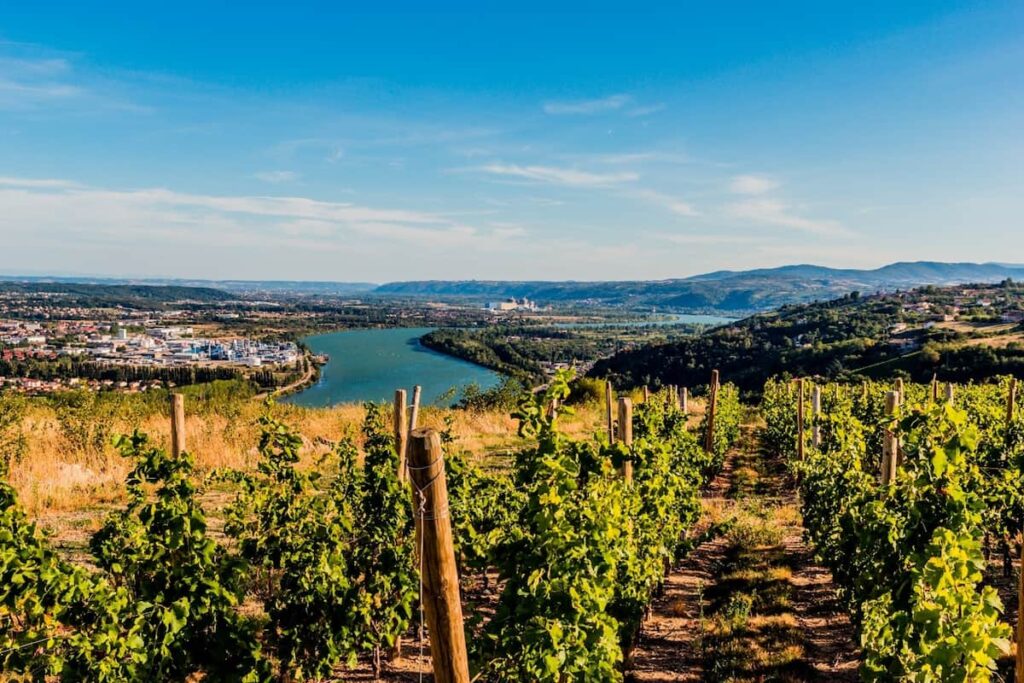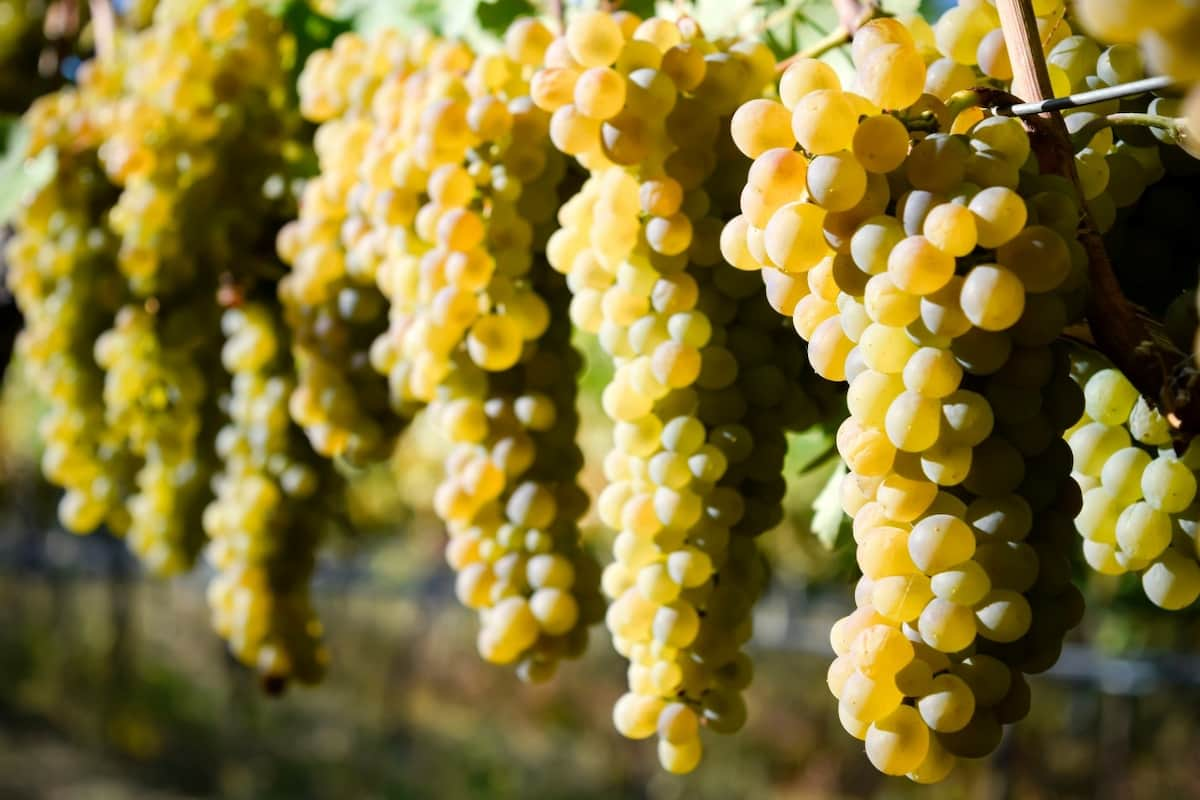
A guide to buying Viognier | What should you know about choosing grape varieties?

Indigenous to the vineyards of Condrieu in southern France, Viognier is a wonderfully diverse variety, producing wines that range from fruity and aromatic to voluptuous, barrel-aged beauties. Today, high-quality Viognier is made in the Rhône Valley, Australia, California, New Zealand, and the Languedoc. Meanwhile, trend-conscious winemakers continue experimenting with new clones, fermentation techniques and styles.
This guide will explore the key tasting profiles of Viognier, how it is made, and the best white wines produced from across the world.
Click on a link to jump to that section:
What kind of wine is Viognier?
Viognier has been cultivated in the Rhône Valley for centuries, made as a dry varietal style in Condrieu and blended with Syrah in the appellation of Côte-Rôtie. Certain producers (including New World winemakers) believe it adds perfume and finesse to these iconic red wines. Much admired for its distinct bouquet – rose blossom, stone fruit and honeysuckle – it is nonetheless challenging to grow. Indeed, Viognier can deliver flabby and anonymous wines if the terroir is not up to scratch; it is also highly susceptible to powdery mildew.
Various winemaking techniques, ranging from vinification in stainless steel to barrel fermentation, produce a broad palate of interpretations; climate and terroir also play a vital part. It blends very well with Marsanne and Roussanne in southern France, yielding full-bodied, spicy whites with relatively high alcohol – usually over 14%. Its acidity levels are normally fairly moderate in Condrieu, diminishing further as the climate warms.
Viognier by region
France
Viognier reaches an apogee in the vineyards of Condrieu in the northern Rhône. Exceptional terroir and superior winemaking explain its unprecedented success, producing heady, textured dry whites of great finesse. The high granite content in the soil is said to imbue the wines with fresh minerality; the most favoured climates (vineyard sites) in Condrieu tend to have a mica-rich topsoil.
Encouragingly, prices have remained buoyant due to rising consumer interest in these singular whites. Meanwhile, growers in the southern Rhône and Languedoc are fond of blending Viognier, although single-varietal styles are becoming more common. The best examples are forthright in their fruit expression and exotically scented.
The world’s most famous Viognier wine is made at Château-Grillet: a 3.5-hectare estate of great renown. Awarded its own appellation in 1936, Grillet’s amphitheatre of terraced vines is as close as we get to a Viognier’ Grand Cru’ in the Rhône. Typically matured in a barrel for at least 16 months, these seductive white wines are astonishingly complex.
The USA
Over 1000 hectares of Viognier are planted in California, and cultivated in a diverse collection of regions and microclimates. Yet many of the best wines are made in the (relatively) chillier parts of the Golden State, where Pacific breezes help to cool vine canopies during the summer. Nevertheless, Californian-grown Viognier often showcases richly textured fruit, mild acidity, and plenty of weight on the mid-palate.
South Africa
The Western Cape has taken to producing upfront, generous Viognier wines, packed with fruit and charm. The best has good intensity and presence, with exceptional length on the finish. They are made in various regions and locations; however, the finest whites are usually based on fruit harvested in the cooler spots. As elsewhere, ocean breezes – and altitude – help to moderate the increasingly torrid Cape summers.
Paarl is currently a hot ticket for fine Viognier; blends have long been important in South Africa. Viognier may share the fermentation vat with Rhône white varieties and/or Chardonnay.
Australia
Outside of the Rhône, Australia has arguably enjoyed the greatest success with this fickle grape. It certainly thrives in the Yarra Valley, where co-fermenting Viognier with Shiraz has become the height of fashion. However, there is a growing volume of single-varietal labels being made today, particularly in South Australia’s Barossaand Eden Valleys, the aforementioned Yarra Valley, and Nagambie Lakes in Victoria.
The best wines showcase Viognier’s signature flavour of stone fruit, balanced by ripe (but never high) acidity and freshness.
Viognier viticulture & winemaking
Viognier is often described by winegrowers as “finicky”, and not without good reason! It buds and ripens relatively late in the season, and is prone to coulure (poor fruit set), particularly in wet and windy weather. Therefore, obtaining an economically viable crop from Viognier can be an uphill struggle in difficult vintages.
But the biggest problem with Viognier is knowing when to pick. Its thick-skinned berries yield wines with relatively low levels of acidity; high pH and a lack of structure can be a real issue in hot climate regions. At the same time, Viognier will not achieve full flavour ripeness unless the weather is warm (and dry) for a sustained period. Thus, the timing of the harvest can make or break any Viognier wine – only the most experienced producers can get it right every year.

If the winemaker desires freshness, zip and upfront fruit, protective handling is normally employed: adding a small dose of sulphur dioxide, and cooling the juice protects it from oxidation after the bunches have been pressed. This is then fermented in stainless steel tanks at low temperatures to produce fruitier wine.
Allowing a certain degree of skin contact via cold soak (crushed berries and juice are chilled and left stationary for a few hours) encourages phenol extraction from skins, leading to a more robust Viognier with a fuller flavour. Vinification and maturation in oak barrels add layers of structure and creamy complexity to the wine, potentially enhanced by lees stirring.
How do you choose Viognier wines?
Though it has decreased in its popularity over the years, due to its challenging growing requirements, Viognier still is enjoyed worldwide and is grown in various regions. There are still overripe and sticky versions being made today, but talented growers have proven that Viognier is a willing traveller, producing an eclectic palate of styles in Europe and the New World. Much of its appeal derives from the sheer intensity of the fruit, particularly in warmer climates.
The most expensive and prestigious labels, however, are made in the northern Rhône. If you desire a single-varietal expression of Viognier, that is your best choice. In addition, Viognier should not be served too cold as this inhibits the aromas; most winemakers recommend a serving temperature of about 10-12 °C. A wide, Burgundy-style glass will flatter the grape, accentuating the aromas as you swirl.
Lastly, most experts believe that Viognier should generally be enjoyed young, arguing that it develops an unpleasant ‘oily’ characteristic with age. Yet top vintages of Château Grillet can soar after ten years in bottle, gaining richness, depth, and complexity.
If you are unsure on which white wine to buy, contact us today to speak to one of our wine merchants.
Frequently asked questions
What food pairs well with Viognier?
Viognier is in its element at the dinner table. Try this versatile grape with fish curries braised in coconut milk, shellfish, and pork stroganoff.
Is Viognier similar to Sauvignon Blanc?
Both varieties offer pungent fruit. However, Viognier tends towards apricot and stone fruit aromas, contrasted against Sauvignon Blanc’s signature flavour of gooseberry. The latter is usually a higher acid grape, with less body than Viognier.
Find out more about Sauvignon Blanc with our expert buyer’s guide on the grape variety here.




